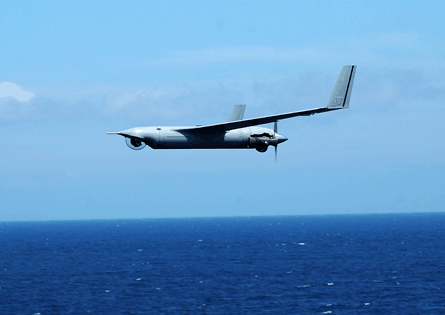Boeing aims to become the biggest player in the unmanned systems business within the next five years, throwing the gauntlet down to the current market dominators such as Northrop Grumman and General Atomics.
Its newly formed Unmanned Airborne Systems division, which will bring together and lead the efforts in the segment, aims to have $1 billion in revenues in the next five years through both organic growth and mergers and acquisitions, says Chris Chadwick, president of Boeing Military Aircraft.
The ambitious targets come as analysts say Boeing IDS faces a challenging time after the US defence department budget proposal in April, when the Pentagon cut many of the programmes in the company's portfolio. Others believe that Boeing is just trying to play catch-up to Northrop Grumman, which has the Global Hawk, and General Atomics, which produces the Predator and Reaper.
 |
|---|
© Insitu |
Chadwick disagrees: "Actually, Boeing had unmanned systems across IDS. We just had not pulled it into a system to allow economies of scale, leverage investment and leverage technology in a seamless fashion. We can now do that with this division," he says.
"We believe we can become the dominant player in this segment in three to five years. There are a variety of products like the Predator and the Global Hawk, but nobody really dominates. We believe the market is wide open. We are going to take an aggressive stance to develop a portfolio and get it out there to the customer."
Reliability is a key issue in the unmanned market now, he says, and the company can leverage its experience in the manned sector to fix that. "If you look at what we offer in the manned market, reliability is never an issue. However, that is still a problem in the unmanned market. What we want to do is increase the reliability and capability among UAVs."
Boeing's unmanned portfolio currently centres on the capabilities offered by the ScanEagle, which it acquired through the purchase of Insitu last year, and the A-160 rotary-wing UAV. It also has the Phantom Ray, which is based on the X-45 that was originally developed for the US Navy's unmanned combat air system programme.
It is scheduled to make its first flight in December 2010 to demonstrate ISR, electronic attack and strike capabilities.
- All the latest news, images and video from the Paris Air Show
Source: Flight Daily News
















